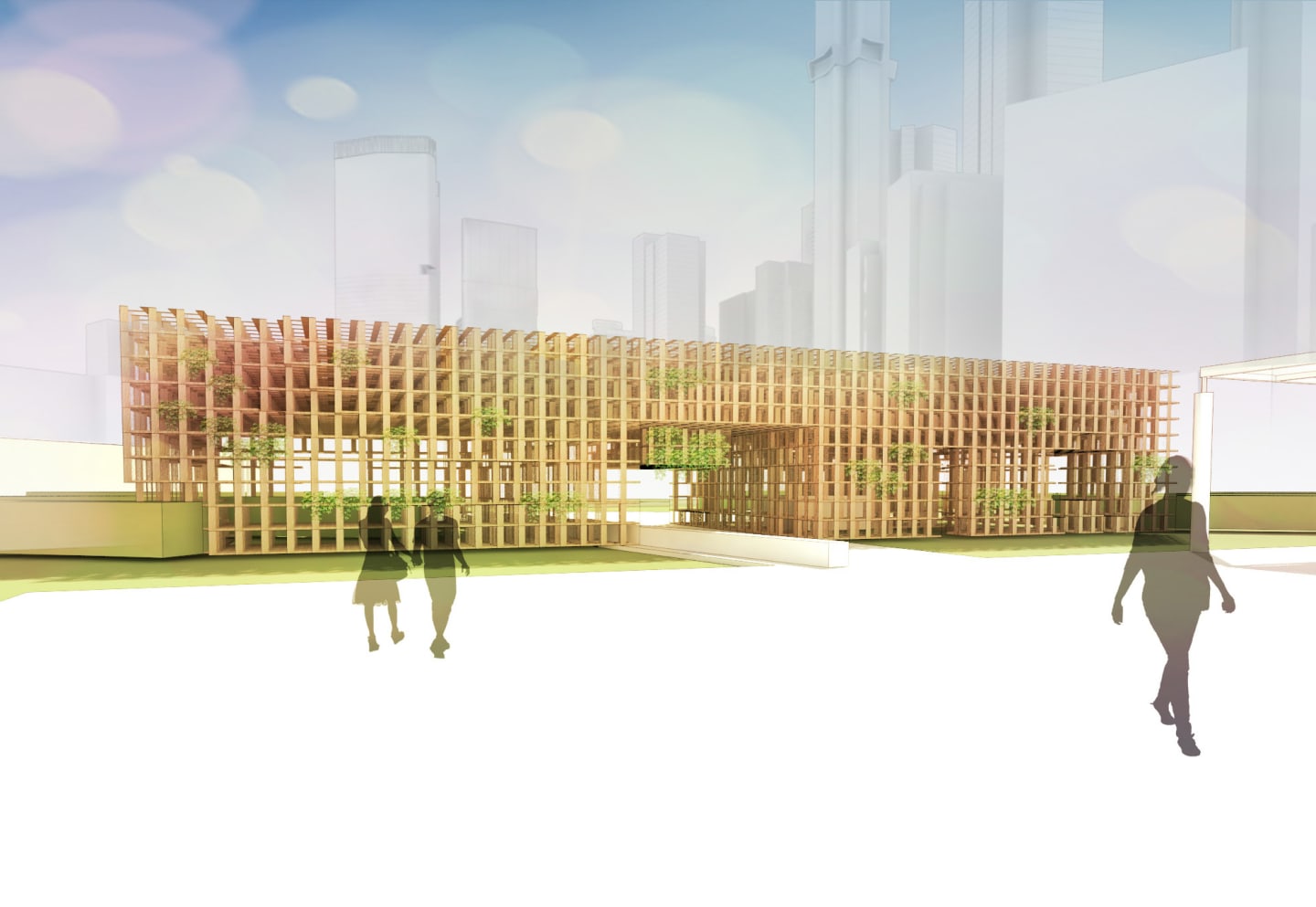NGV Pavilion 2016: Laurence Dragomir and Isaac Mortimer
As was previously mentioned in an earlier article, as part of Grimshaw's entry into the National Gallery of Victoria (NGV) Pavilion competition, the office undertook an internal design competition. Today's piece looks at a scheme I developed with my good friend and colleague, Isaac Mortimer. The design is based around the principle of a 450mm x 450mm module repeated to form an enclosure that defines a series of smaller and larger formal and informal spaces of various use.
At its most basic, the module is the ideal dimension for a seat or when repeated laterally benches or planter boxes. The design as illustrated in the renderings is not considered 'the design' but rather a system that can be adopted and formed into a structure that responds to the desires and requirements of the NGV.
The orthogonal geometry pays homage to the NGV's form but is eroded to create a threshold space between the NGV and the Grollo Equiest gardens. It has been located to incite discovery and create curiosity and is deliberately skeletal in nature - a temporary scaffolding - which is expressed via its composition and connections outward.
The grid structure encourages interaction and invites investigation. Visitors can peek through the openings along the exterior perimeter of the pavilion as well as climb it, hang objects and items off it or possibly even create art installations by threading string or rope through the frame.
Additionally, the scaffold-like nature of the structure pays tribute to the Grollo family's legacy of building Melbourne, due to their involvement in the construction of a vast number of significant Melbourne buildings. The pavilion represents a series of parts coming together to form something greater. It can be understood a number of ways.
The internal spaces are also defined by erosion of the grid structure allowing for the curation of spaces for circulation between the NGV and gardens and also spaces for dwelling, hosting small informal gatherings but also larger lectures and performances too.
The flexibility of the pavilion for hosting different programs of art is the representation and consolidation of the Arts Precinct functions into one space. A teaser of the Arts Precinct that provides just a small enough glimpse to tempt a visitor into exploring the wider precinct.
Beyond the pavilion's lifecycle within the NGV grounds, it is proposed that it would be disassembled down to its humblest form: the 450 x 450 module which would be dispersed or consolidated into street furniture or artwork elements strewn throughout the city. A form of memorabilia that is seen and understood as once being part of something larger, but is now ingrained further into the city streets.
